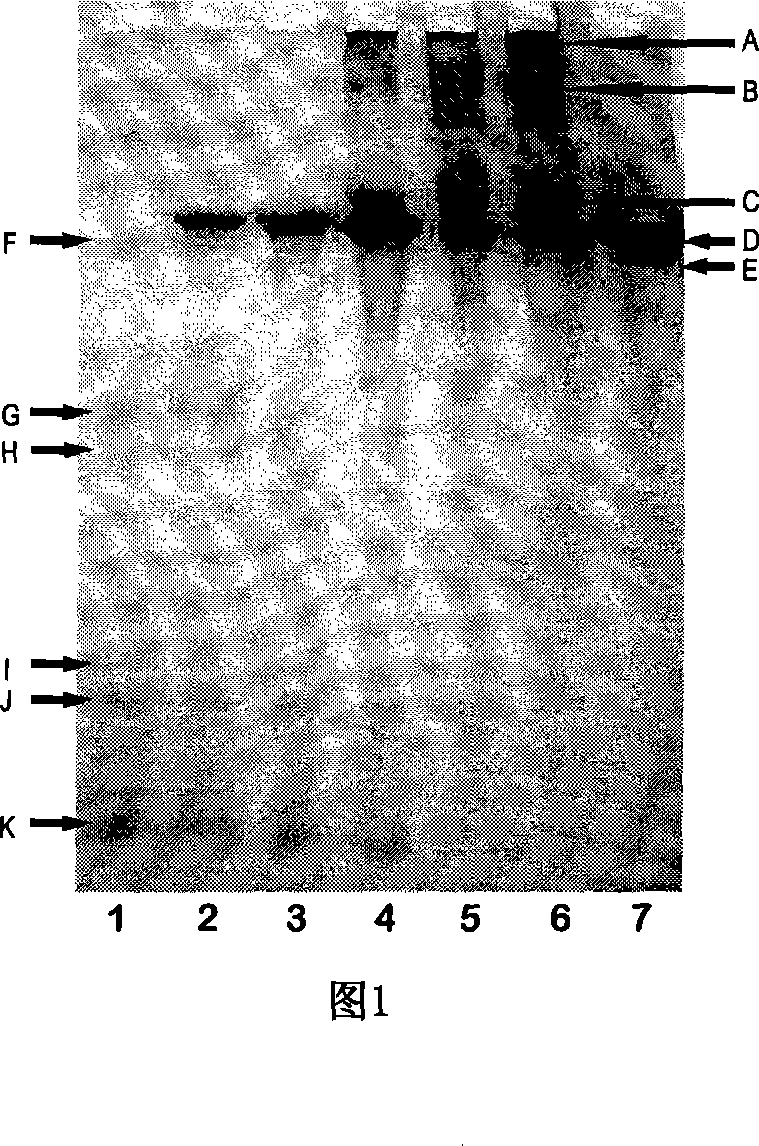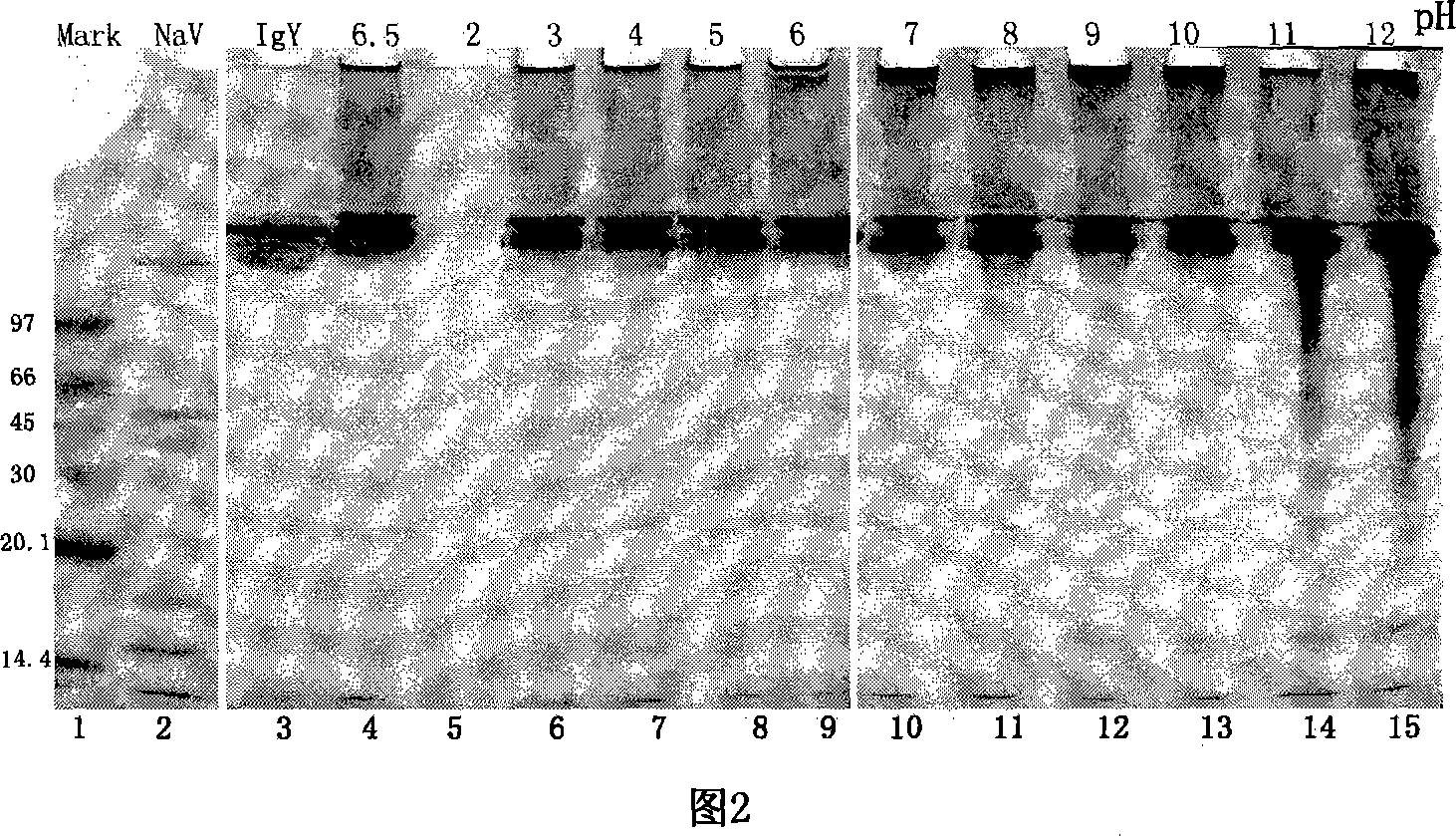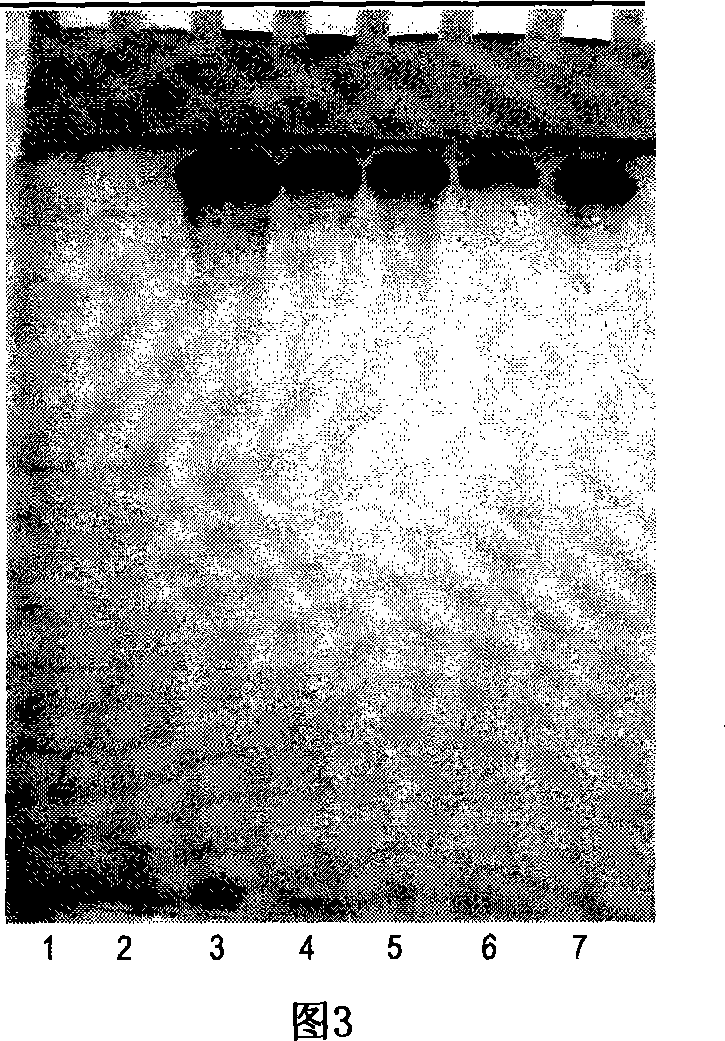Snake toxin antigen-antibody reaction quantitative determination method
A technology for antibody reaction and quantitative determination, applied in the field of biochemistry, can solve the problems of strong carcinogenicity, low separation rate, loss of antigen, etc., and achieve the effects of simple operation, high resolution, and good application prospects.
- Summary
- Abstract
- Description
- Claims
- Application Information
AI Technical Summary
Problems solved by technology
Method used
Image
Examples
Embodiment 1
[0041] Example 1: Determination of the Optimal Ratio of Antigen / Antibody Binding
[0042] (1) Cobra venom was extracted with a snake venom extractor (patent number: ZL200420046279.9), prepared into standard cobra venom freeze-dried powder, and stored at 4°C for later use.
[0043](2) After emulsifying the standard snake venom antigen and Freund's adjuvant, inject it into the chicken body, collect anti-venom IgY eggs after 2 weeks, use water dilution method to extract and ammonium sulfate salting out-anion exchange chromatography and other steps (refer to the patent application number : Publication of 200610035761.6), to prepare the monovalent anti-venom chicken egg yolk antibody (IgY) of cobra.
[0044] (3) Take the standard cobra venom freeze-dried powder and anti-cobra venom IgY to prepare standard cobra venom solution and standard anti-cobra venom IgY solution respectively. The standard cobra venom was mixed with the standard anti-cobra venom IgY in different proportions (...
Embodiment 2
[0050] Embodiment two: anti-cobra venom IgY stability determination
[0051] The extraction and preparation of the standard cobra venom and the standard anti-cobra venom IgY were the same as in Example 1. After the cobra venom solution and the anti-cobra venom IgY solution were obtained, the acid-base stability and thermal stability of the anti-cobra venom IgY were determined.
[0052] (1) Determination of acid-base stability of anti-cobra venom IgY
[0053] Use 1mol / l HCL or NaOH to adjust the pH value of the standard anti-cobra venom IgY solution to 2, 3, 4, 5, 6, 6.5, 7, 8, 9, 10, 11 and 12, and let it stand at room temperature for 30 minutes Mix with standard cobra venom at 2.75:1, incubate at 38°C for 45 minutes, shake for 15 minutes at a speed of 100 rpm / min; let stand for 30 minutes. Then add sample buffer, so that the final concentration of standard cobra venom is 10ug / ul, and the final concentration of anti-cobra venom IgY is 27.5ug / ul. React at 100°C for 5 minutes,...
Embodiment 3
[0064] Example 3: Determination of cross-immunity activity
[0065] Take the standard anti-cobra venom IgY and mix them with Chinese cobra, Agkistrodon akistrodon, domestic viper and Bungara venom at 2.75:1 respectively. Add 10ul. Stained after electrophoresis, the gel was scanned by optical density, and the cross-immune activity and potency between monovalent antivenom IgY and four common venomous snake venoms in my country were quantitatively analyzed according to the disappearance or density reduction of the relevant snake venom bands. The result shows (referring to Fig. 4): compare with swimming lane 1, all bands of cobra venom in swimming lane 2 all drift, illustrate that anti-cobra venom can completely neutralize cobra venom; Compared with swimming lane 7, in swimming lane 8, only part The band drifted or the density decreased, indicating that the anti-cobra venom could partially neutralize the silver ring snake venom; after the co-incubation of viper venom and Agkistro...
PUM
 Login to View More
Login to View More Abstract
Description
Claims
Application Information
 Login to View More
Login to View More - R&D
- Intellectual Property
- Life Sciences
- Materials
- Tech Scout
- Unparalleled Data Quality
- Higher Quality Content
- 60% Fewer Hallucinations
Browse by: Latest US Patents, China's latest patents, Technical Efficacy Thesaurus, Application Domain, Technology Topic, Popular Technical Reports.
© 2025 PatSnap. All rights reserved.Legal|Privacy policy|Modern Slavery Act Transparency Statement|Sitemap|About US| Contact US: help@patsnap.com



